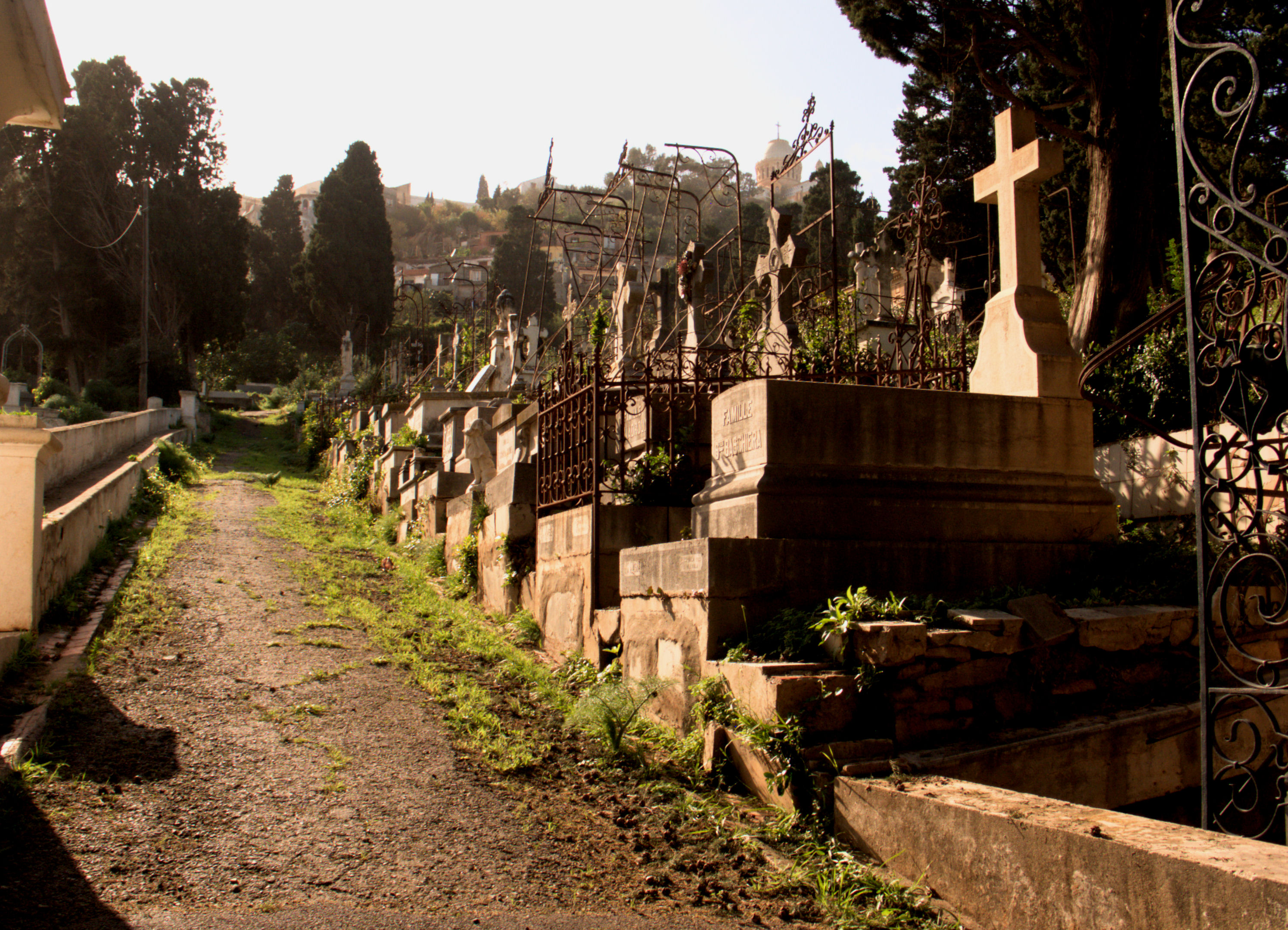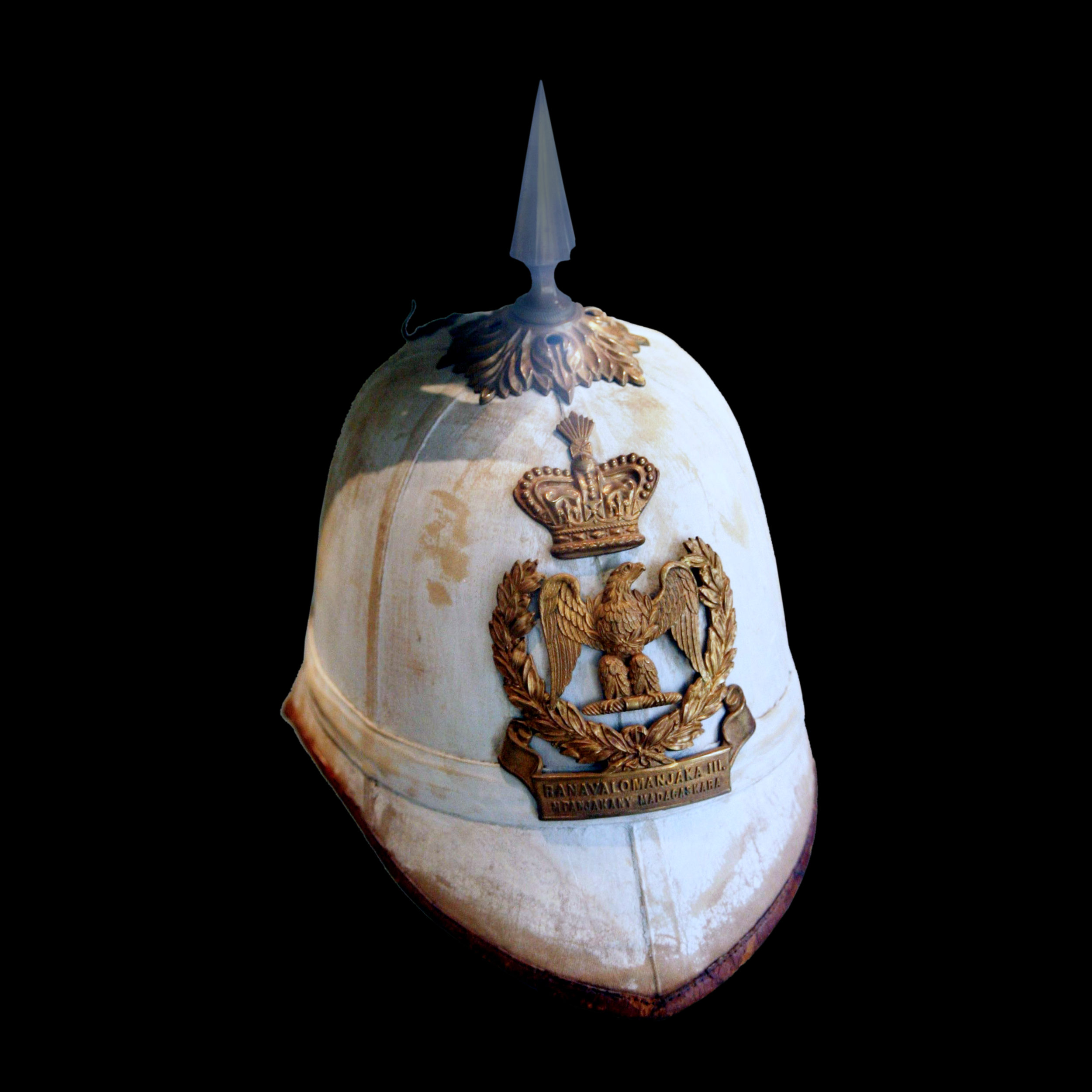|
St. Eugene Cemetery
St. Eugene Cemetery ( ar, سانت يوجين مقبرة) is one of the most famous cemeteries in Algeria. It is situated in a suburb of the city of Algiers in the Communes of Algeria, commune of Bologhine. Covering an area of 14.5 hectares, it lies at the foot of Notre Dame d'Afrique, and is maintained by twenty employees In 2012, the President of the French Republic François Hollande visited it. It comprises tombs of numerous Algerian notables and it is one of the most preferred place for actors and actresses and other artists (opera singers, musicians, painters, sculptors, architects, writers, poets). It also includes the tombs of several scientists, academicians and sportspeople. Notable interments *Alexandre Fourchault *Fernand Yveton *630 French soldiers in a military square of the two wars where the tombs are grouped into Army Corps specialties. *Queen Ranavalona III. She will, however, be unearthed in 1938. *Victimes of the :fr:fusillade de la rue d'Isly, Isly street ... [...More Info...] [...Related Items...] OR: [Wikipedia] [Google] [Baidu] |
Ranavalona III
Ranavalona III (; 22 November 1861 – 23 May 1917) was the last sovereign of the Kingdom of Madagascar. She ruled from 30 July 1883 to 28 February 1897 in a reign marked by ultimately futile efforts to resist the colonial designs of the government of France. As a young woman, she was selected from among several Andriana qualified to succeed Queen Ranavalona II upon her death. Like both preceding queens, Ranavalona entered a political marriage with a member of the Hova elite named Rainilaiarivony, who largely oversaw the day-to-day governance of the kingdom and managed its foreign affairs in his role as prime minister. Ranavalona tried to stave off colonization by strengthening trade and diplomatic relations with foreign powers throughout her reign, but French attacks on coastal port towns and an assault on the capital city of Antananarivo led to the capture of the royal palace in 1895, ending the sovereignty and political autonomy of the centuries-old kingdom. Ranavalona ... [...More Info...] [...Related Items...] OR: [Wikipedia] [Google] [Baidu] |
Cemeteries Of Algiers
There are a number of cemeteries in Algiers. Among them is the Thaalibia Cemetery, the oldest one. A number of them have listed buildings or structures, or have been classified and registered as historic . List Gallery File:Cimetière des Thaalba à Alger 5.JPG, Thaalibia Cemetery File:Marabout Sidi M'hamed Alger.jpg, Sidi M'hamed Bou Qobrine Cemetery File:El Kettar القطار.jpg, El Kettar Cemetery File:Alya-door2.jpg, El Alia Cemetery File:StEugene-Alger05a.jpg, St. Eugene Cemetery See also *Lists of cemeteries * Ministry of Religious Affairs and Endowments *Algiers Province * *Management of funerals and cemeteries of Algiers Management (or managing) is the administration of an organization, whether it is a business, a nonprofit organization, or a government body. It is the art and science of managing resources of the business. Management includes the activities ... References External links * * * {{Cemeteries of Algiers Cemeteries ... [...More Info...] [...Related Items...] OR: [Wikipedia] [Google] [Baidu] |
Edmond Yafil
Edmond Nathan Yafil (1874 – October 1928) was an Algerian composer. Biography Native Jew born in Algiers in 1874, Yafil began, as all the musicians of his time, by attending the Moorish cafés of the old Casbah Algiers places where perpetuated the tradition of sanaa music, also referred to as Andalusian classical music. He will collaborate with Jules Rouanet on the cataloging of sanaa music and in theater with Mahieddine Bachtarzi and Ali Sellali. He is buried at the St. Eugene Cemetery St. Eugene Cemetery ( ar, سانت يوجين مقبرة) is one of the most famous cemeteries in Algeria. It is situated in a suburb of the city of Algiers in the Communes of Algeria, commune of Bologhine. Covering an area of 14.5 hectares, i .... Bibliography * Répertoire de musique arabe et maure : collection de mélodies, ouvertures, noubet, chansons, préludes, etc. / recueillie par Edmond-Nathan Yafil, sous la direction de Jules Rouanet. References External linksBiogr ... [...More Info...] [...Related Items...] OR: [Wikipedia] [Google] [Baidu] |
List Of Companions Of The Liberation
This is a List of the Companions of the Liberation, which consist of people, communities and military units that have been awarded the Ordre de la Libération. 1038 people, 5 cities, and 18 military units have been awarded '' Compagnons de la Libération''. Amongst the 1038 Compagnons, 271 have been awarded posthumously, 60 were not French at the time they were awarded and six are women. The last surviving member of the order, Hubert Germain, died on the 12th of October 2021. People A *André Aalberg *Michel Abalan *Valentin Abeille *José Aboulker *Robert Abraham * *Alain Agenet *Edouard Ahnne * Raymond Appert *Marcel Albert *Berty Albrecht *Blaise Alexandre *Roland Alibert de Falconnet * Émile Allegret *Roger Alloues *Henri Amiel * Dimitri Amilakvari *René Amiot * Hubert Amyot D'Inville *Louis Andlauer *Gustave André *Roger André *Jacques Andrieux *Pierre Anglade *Bernard Anquetil *Roméo Antoniotti *Paul Appert *Pierre Arainty *Paul Aribaud * Louis Armand * Michel Arnaud * ... [...More Info...] [...Related Items...] OR: [Wikipedia] [Google] [Baidu] |
Dahomey
The Kingdom of Dahomey () was a West African kingdom located within present-day Benin that existed from approximately 1600 until 1904. Dahomey developed on the Abomey Plateau amongst the Fon people in the early 17th century and became a regional power in the 18th century by expanding south to conquer key cities like Whydah belonging to the Kingdom of Whydah on the Atlantic coast which granted it unhindered access to the tricontinental triangular trade. For much of the middle 19th century, the Kingdom of Dahomey became a key regional state, after eventually ending tributary status to the Oyo Empire. European visitors extensively documented the kingdom, and it became one of the most familiar African nations to Europeans. The Kingdom of Dahomey was an important regional power that had an organized domestic economy built on conquest and slave labor, significant international trade and diplomatic relations with Europeans, a centralized administration, taxation systems, and a ... [...More Info...] [...Related Items...] OR: [Wikipedia] [Google] [Baidu] |
Béhanzin
Béhanzin ( – 10 December 1906) is considered the eleventh (if Adandozan is not counted) King of Dahomey, modern-day Republic of Benin. Upon taking the throne, he changed his name from Kondo. Biography He succeeded his father, Glele, and ruled from 1889 to 1894. Béhanzin was Dahomey's last independent ruler established through traditional power structures. He led the resistance to French colonization of his kingdom, during the Dahomey Wars. Each of Dahomey's kings was represented in sculpture with images that referred to the proverbs, associations, and wordplay attached to his royal name. The images that symbolize Behanzin (or Gbehanzin) include an egg held by a hand, as the words for these in the Fon language form a rebus, or pun, of the royal name. As may be seen in the large wooden statue once displayed in the royal palace at Abomey (and now in the Musee Quai Branly in Paris), the shark is a metaphor for Behanzin; as does the shark, the king guards the coast of the ... [...More Info...] [...Related Items...] OR: [Wikipedia] [Google] [Baidu] |
Fernand Yveton
Fernand Iveton (his surname is sometimes erroneously rendered as "Yveton"; 12 January 1926, Algiers – 11 February 1957) was the only pied noir among the 198 supporters of the FLN who were executed (as opposed to being killed in battle) during the Algerian War. Iveton was born in 1926 in Algiers to a Spanish mother and a French father. The father was a member of the Algerian Communist Party (PCA) which the younger Iveton also joined, at the age of sixteen. When the PCA and the FLN signed an agreement in 1956, Iveton, who was a member of the Communist Combattants de la Libération joined the FLN as an individual member. In November 1956, Iveton, who worked as a turner at the Algerian Gas Company, was given the task of planting a bomb at the Hamma power station. In order not to kill anybody, he decided both to place the bomb in his locker and to set the timer so that the bomb would explode when the workplace would be empty. However, because of his political record, Iveton was ... [...More Info...] [...Related Items...] OR: [Wikipedia] [Google] [Baidu] |
Algeria
) , image_map = Algeria (centered orthographic projection).svg , map_caption = , image_map2 = , capital = Algiers , coordinates = , largest_city = capital , religion = , official_languages = , languages_type = Other languages , languages = Algerian Arabic (Darja)French , ethnic_groups = , demonym = Algerian , government_type = Unitary semi-presidential republic , leader_title1 = President , leader_name1 = Abdelmadjid Tebboune , leader_title2 = Prime Minister , leader_name2 = Aymen Benabderrahmane , leader_title3 = Council President , leader_name3 = Salah Goudjil , leader_title4 = Assembly President , leader_name4 = Ibrahim Boughali , legislature = Parliament , upper_house = Council of the Nation , lowe ... [...More Info...] [...Related Items...] OR: [Wikipedia] [Google] [Baidu] |
Alexandre Fourchault
Alexandre Édouard Constant Fourchault (19 August 181710 April 1884) was a French officer. Studies He studied at the ''Lycée Benjamin-Franklin d'Orléans'' with several senior officers of the French Army and French politicians. He was trained militarily in the École spéciale militaire de Saint-Cyr and in the ''École d'application du Corps royal d'état-major''. He did his infantry training with the 58th line in Algeria in 1843, passed to the 3rd chasseurs the following year, and was attached to the Bourges division in 1847. Career Conquest of Algeria He served in North Africa during the French conquest of Algeria. Crimean War He took part in the Crimean War from 1854 to 1856. Franco-Prussian War He returned to Algeria, then took part in the Franco-Prussian War of 1870, in particular in the battles of: * Battle of Mars-la-Tour, in Moselle (August 16–18, 1870): where heavy fighting broke out between the French forces and the Prussian troops commanded by General Augu ... [...More Info...] [...Related Items...] OR: [Wikipedia] [Google] [Baidu] |





